The harvest mouse is Britain’s smallest rodent species weighing less than a two pence coin. Although often associated with crops, this little mouse can be found in a variety of habitats from reedbeds to roadside verges and rough grasslands.
The harvest mouse also boasts a unique skill that no other mammal in Britain possesses – a semi-prehensile (grasping) tail. This means it can curl the top third of its tail, almost like an extra hand, perfect for climbing tall stems.
We know very little about harvest mice numbers and distribution in Britain so it is vital to record sightings of these animals so we can improve conservation strategies to protect them.
Learn more about harvest mice in our expert guide by the Mammal Society, including how to identify, diet and habitat.
Learn more about rodents in the UK:
What is the scientific name of the harvest mouse?
The scientific name for harvest mouse is Micromys minutus. The genus Micromys belongs to the rodent Family Muridae which is the largest family of rodents with over 700 species.
Micromys translates to micros meaning ‘small’ and mys ‘mouse’ with minutus meaning ‘tiny’. Harvest mice are by far the smallest members of the Family and have short, blunt muzzles and prehensile tails, meaning they can use their tails to grip things.
In Britain, there are six murid species, as well as the harvest mouse there is:
- Wood mouse (Apodemus sylvaticus)
- Yellow-necked mouse (Apodemus flavicollis)
- House mouse (Mus musculus)
- Brown rat (Rattus norvegicus)
- Black rat (Rattus rattus)
How to identify harvest mice
How big are harvest mice?
Harvest mice are very small weighing just 5-8 grams. They have golden-russet fur, a pale tummy and a semi-prehensile tail. Compared to other mouse species, their muzzle appears blunt, and their eyes and ears are relatively smaller. The length of their head and body together is 5-7 cm and their tail is of a similar length.
Other similar species to look out for include:
Hazel dormouse: This species (and the non-native edible dormouse which is much bigger and grey) are the only rodents found in Britain that have bushy tails. The fur is orange/yellow on top and pale underneath with white throat markings. They have long black whiskers and prominent black eyes.
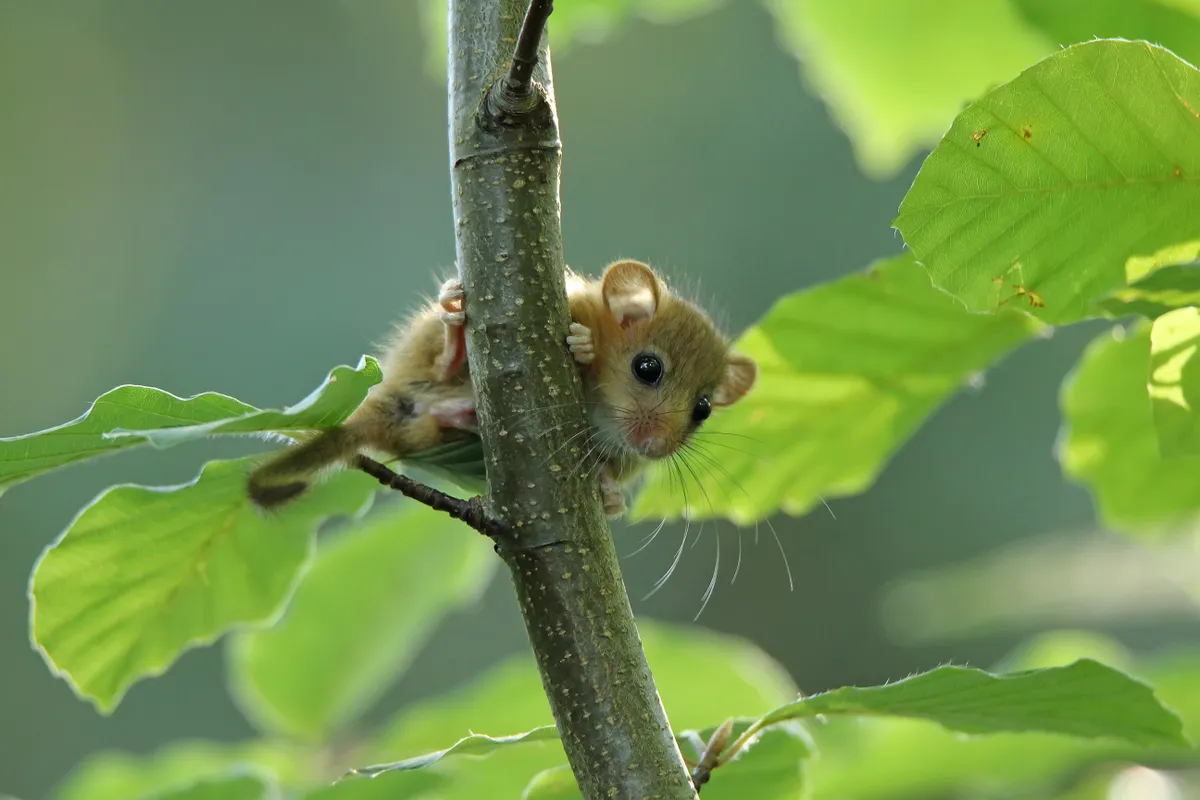
House mouse: Unlike the golden fur of harvest mice, house mice have grey/brown fur and much more prominent ears than the small subtle ears of harvest mice. They are also larger than harvest mice with a head and body length of 7-9 cm and a tail of similar size.
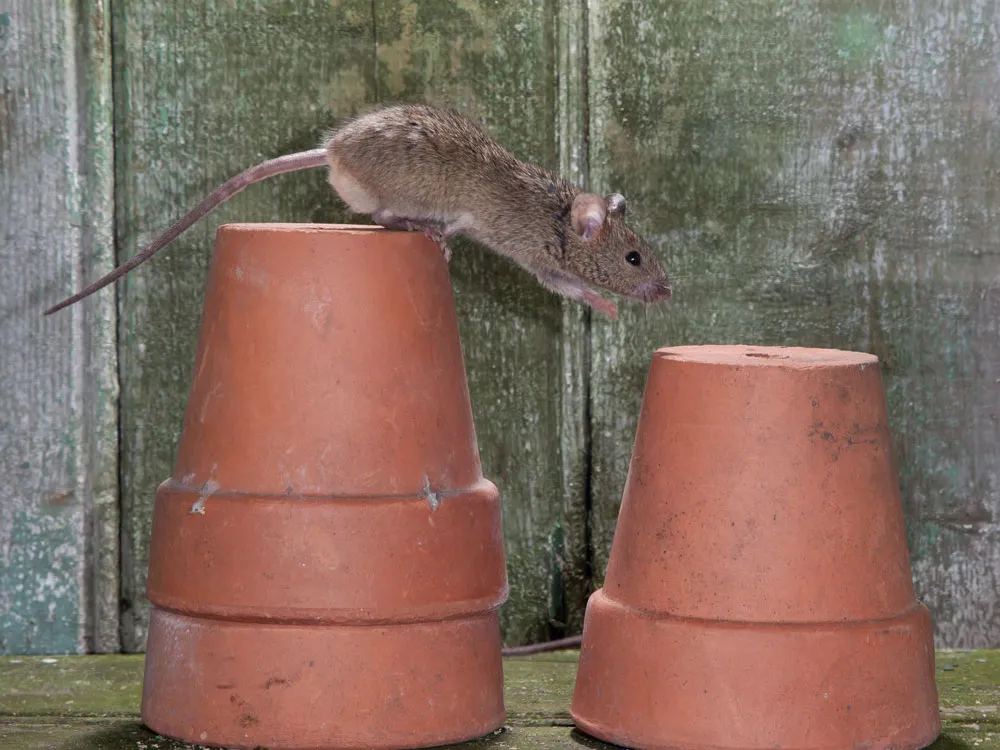
Wood mouse and yellow-necked mouse: Both have large prominent eyes and ears with darker red/brown fur than harvest mice on top. Yellow-necked mice will have a yellow collar stretching from one shoulder to the other, across the throat. Wood mice may also have a yellow mark on their throat, but not a complete collar. They are similar in size or larger than house mice.

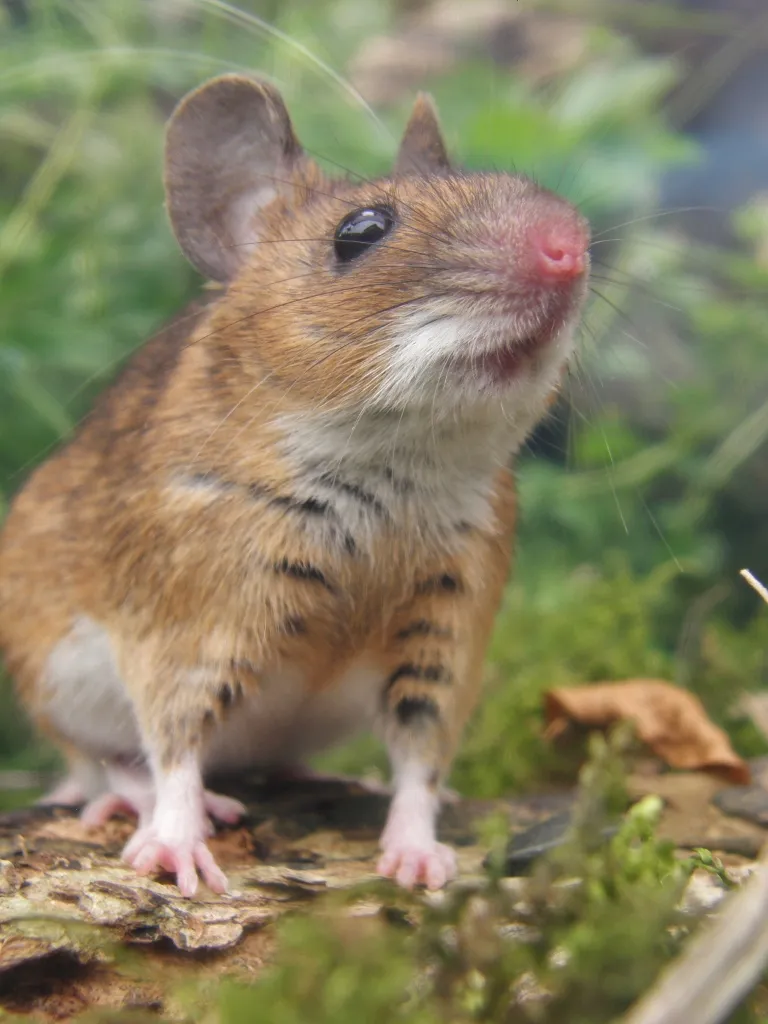
Bank vole and field vole: These species also have smaller muzzles than mice, but neither are the golden brown colour of harvest mice. They are also both much bigger at 9-11 cm and 20-40 g and their tails are shorter than their bodies.
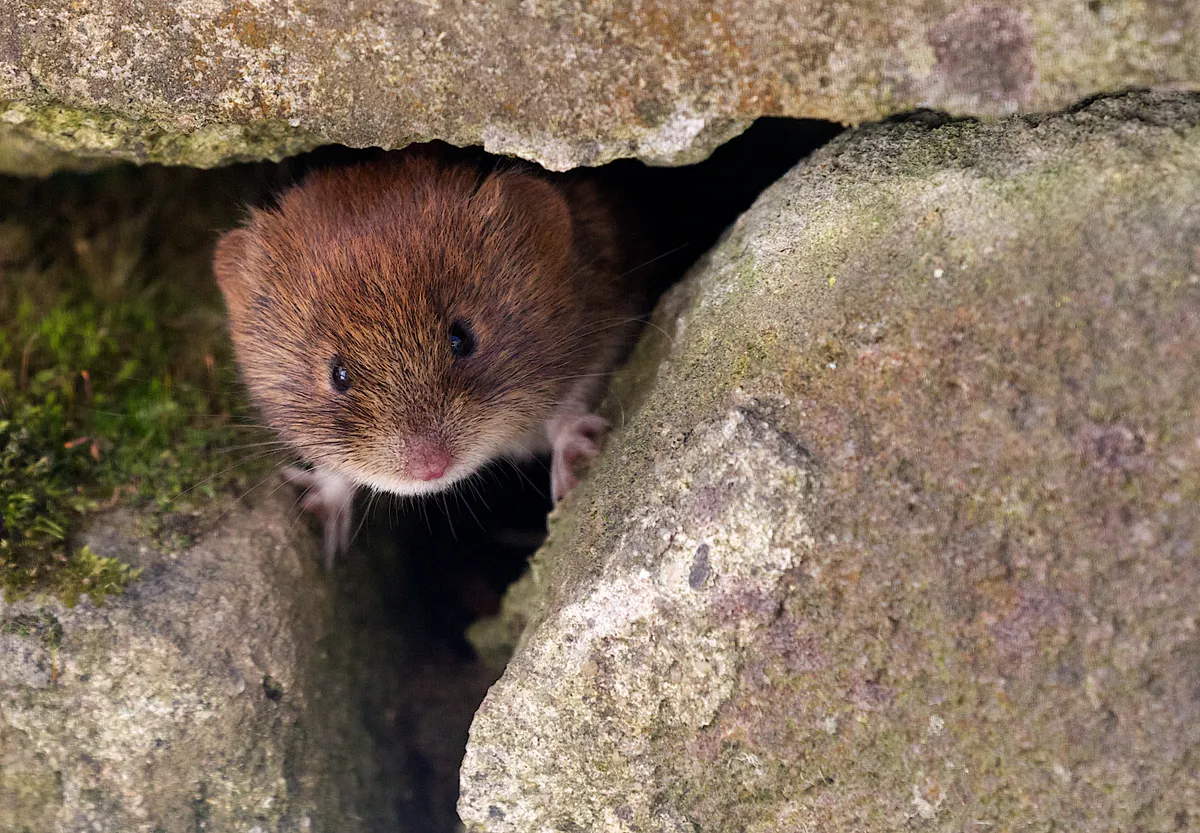
How do harvest mice use their tails?
The tail of the harvest mouse is unique because it is semi-prehensile (capable of grasping). This means harvest mice can use the end third of their tail to grasp onto things such as grass stalks - almost like an extra hand! This and their light weight mean they are excellent climbers and can move about off the ground in tall grass, reeds or bramble during the summer and autumn.
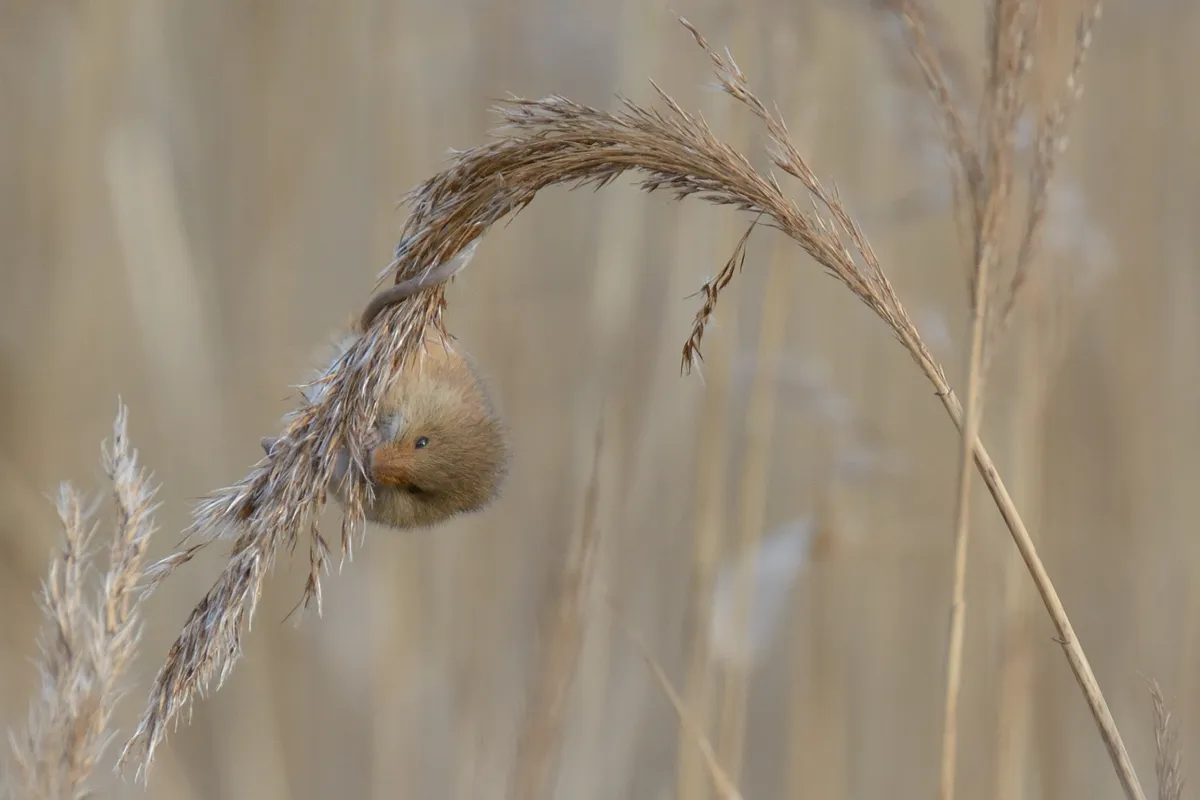
Where are harvest mice found?
The Eurasian harvest mouse is found across much of Europe and also parts of Asia including China, Japan and India. They are not found in Northern Ireland or the Republic of Ireland and there are very few records in Scotland – only five in the last 20 years!
What habitats do harvest mice live in?
Harvest mice can be found in a variety of habitats including rough grasslands, reed beds, riparian margins, roadside verges, hedgerows, cereal crops (e.g. oats and wheat), field margins, and wild birdseed crops. Their small size and semi-prehensile tail mean they are great climbers and can easily occupy the stalk zones of these habitats.
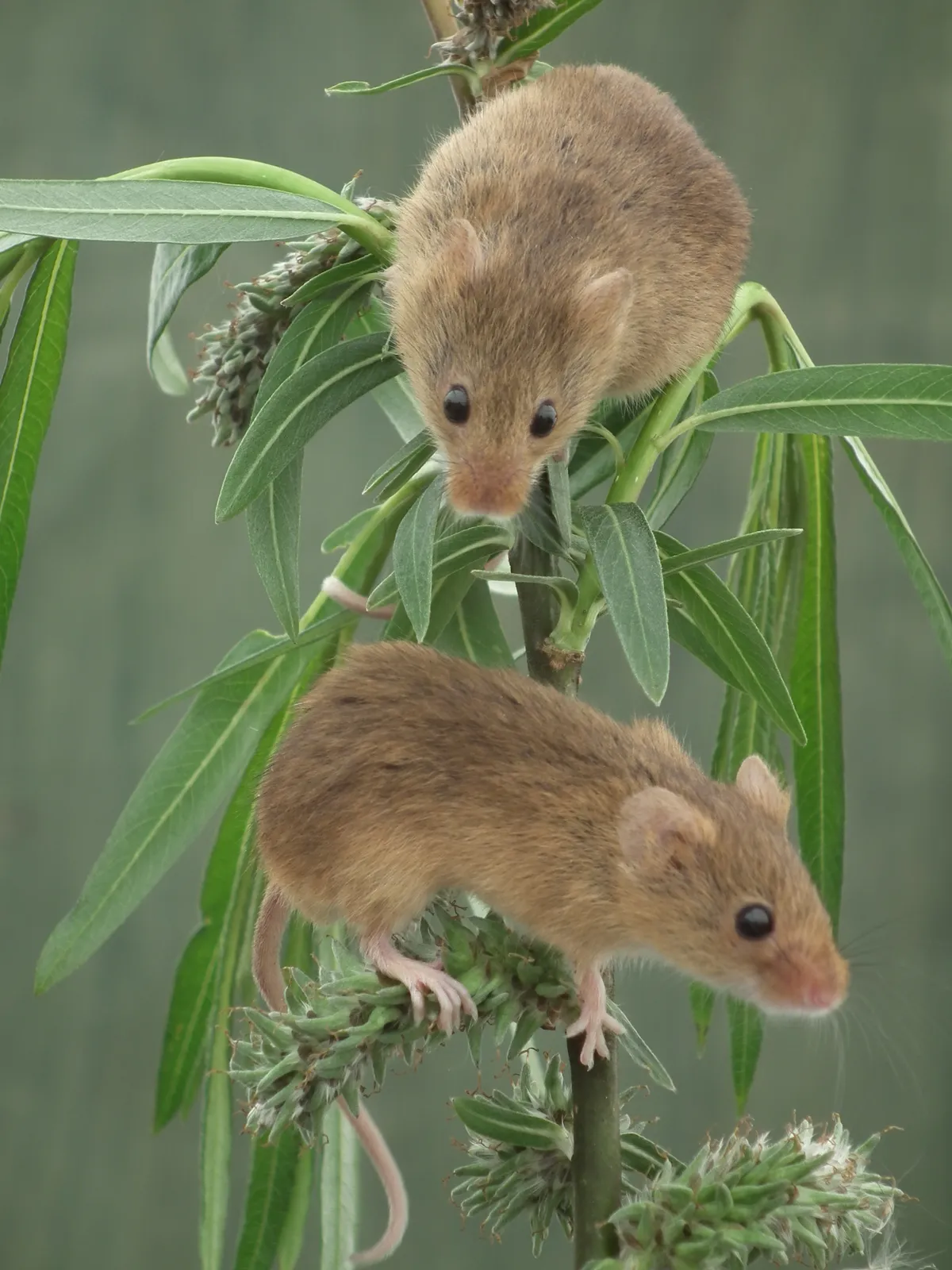
How many harvest mice are there in the UK?
According to the IUCN-approved Red List of British Mammals that the Mammal Society published in 2020, there are estimated to be 532,000 in England and 34,000 in Wales, although there is a great deal of uncertainty around these estimates and a lot more research needs to be done. In Scotland, there have only been five records of harvest mice in the last 20 years, and these have been scattered between the borders, Paisley, and the north coast.
What do harvest mice eat?
Harvest mice eat a mix of seeds, berries and insects. They may also eat moss, roots and fungi. Sometimes they take grain from cereal heads which leaves characteristic sickle-shaped remains; noticeable damage to cereal crops is very rare.
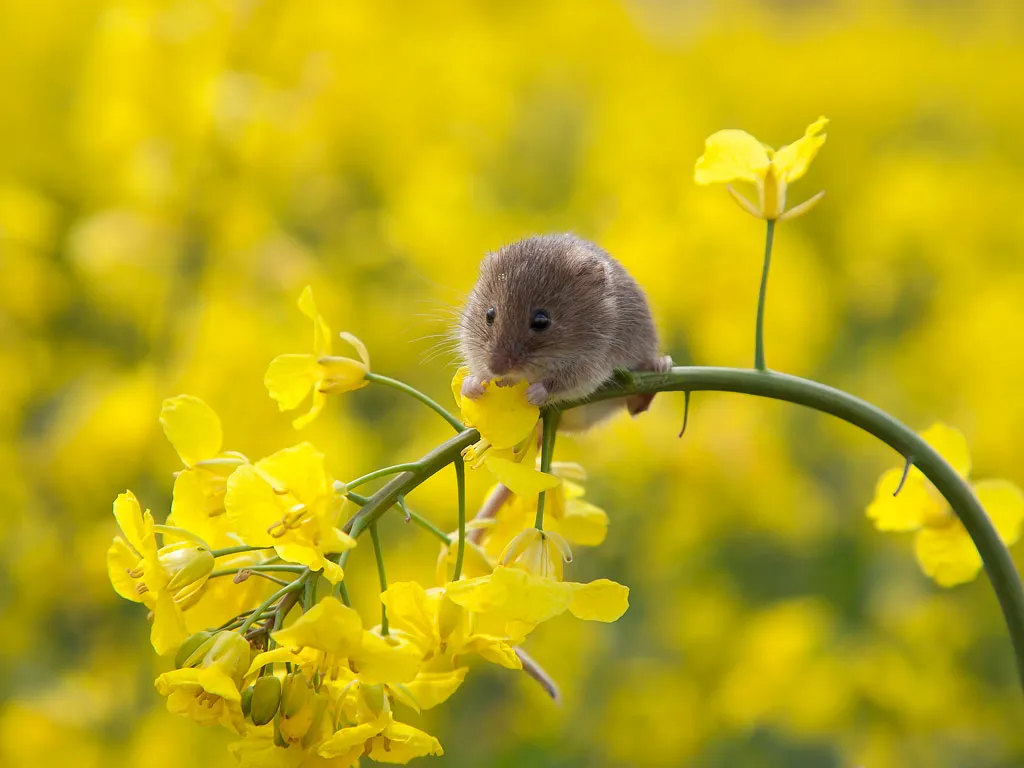
What eats harvest mice?
Because harvest mice are active both night and day, they can be preyed on by several different predators even though they usually only constitute a very small proportion of their diet.
Predatory species include mustelids (such as weasels and stoats, and polecats), foxes, domestic cats, owls, hawks, corvids, shrikes and pheasants. Young may be eaten by blackbirds or even toads.
Do harvest mice hibernate?
Harvest mice do not hibernate and may struggle to sustain themselves in the cold winter months when food is in short supply.
Are harvest mice territorial?
Harvest mice are not generally territorial however there is some evidence that females become territorial during the breeding season when breeding nests tend to be regularly spaced out. In captivity, breeding females have been known to chase males relentlessly and tail biting can be common at high densities.
Are harvest mice nocturnal or diurnal?
Although mainly active at night, and particularly at dawn and dusk, harvest mice can be active during the day, particularly in the summer months when the days are longer.
How long do harvest mice live for?
Harvest mice can live for up to 18 months in the wild, but more often it will be less than that at 6-12 months. For example, animals born in the autumn may survive through the winter into the breeding season the following year.
What are baby harvest mice called?
In general, baby mice of all species are called pups. Pregnant females construct specific breeding nests about 10 cm across (double the size of a non-breeding nest) and gestation takes 17 – 19 days.
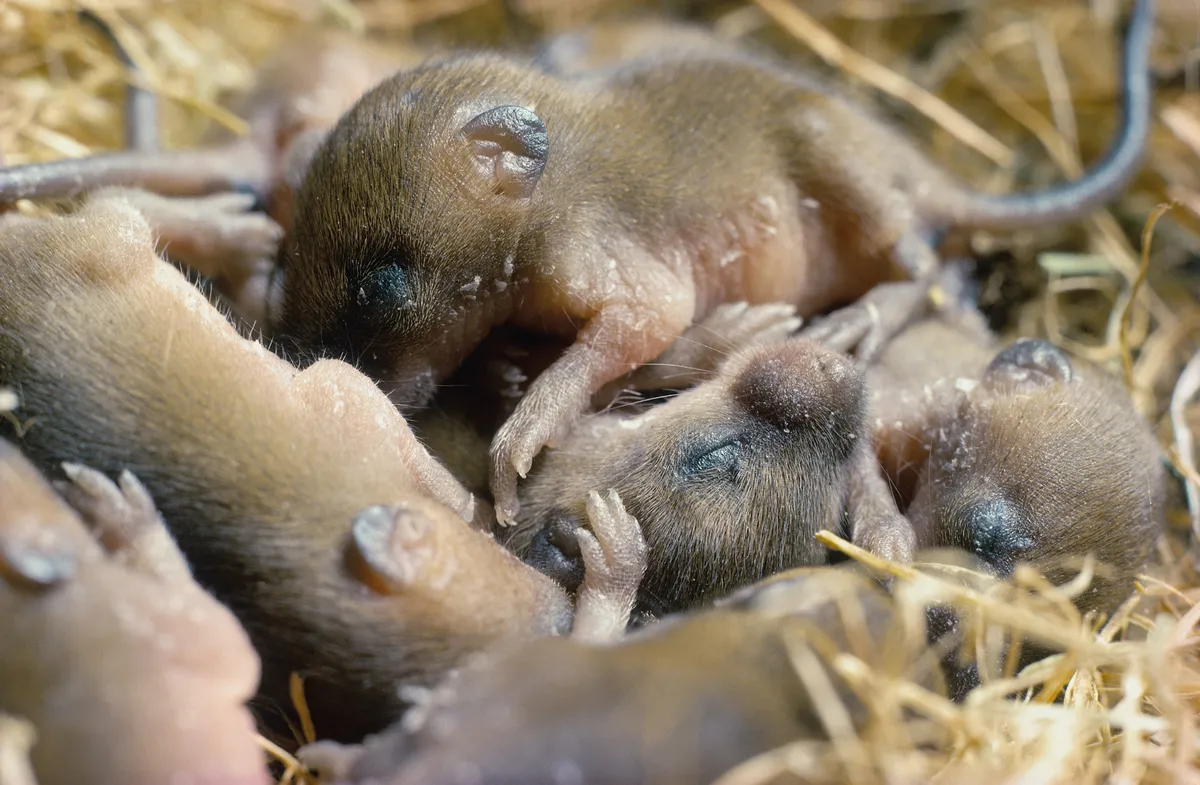
Females give birth to up to seven young who are dependent on their mother for the first two weeks of their life. They are born blind and without fur, weighing no more than 0.8 g each. Grey fur starts to develop after four days, teeth at one week and their eyes open after around nine days. They venture outside the nest at around 11 days and their golden fur starts to come in at two weeks.
How to spot signs of harvest mice
The best sign of harvest mice are their nests. Non-breeding nests can be very difficult to spot and during the breeding season it is best to stay clear of breeding nests, so mothers and their young are not disturbed.
Harvest mouse nest surveys usually take place over late autumn and winter when vegetation has died back enough for nests to be more easily spotted. Sometimes split grass leaves can be found where nests have started to be built but have not been completed, although these can be difficult to see.
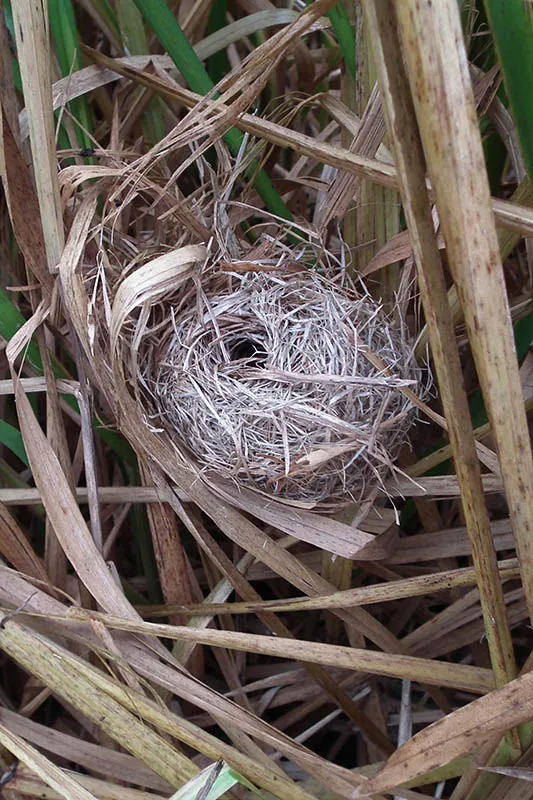
Where are the best places to see harvest mice in the UK?
Harvest mice are known to be quite widespread in the south of the UK, south of a line drawn from The Wash to the River Severn. However, there are records of this species from across Britain and even isolated records as far north as the north coast of Scotland!
The best place to look for harvest mice is in tall tussocky grasses in hedges, field margins and reed beds. However, given the tiny stature of the animal itself, it is often elusive, and evidence of their presence is primarily identified by their characteristic woven grass nests.
Are harvest mice endangered?
Globally harvest mice are not endangered and they are currently listed as Least Concern on the International Union for the Conservation of Nature (IUCN)’s Red List.
However, according to the Mammal Society IUCN-authorised Red List of British Mammals they are Near Threatened in Great Britain as a whole. In Scotland, where we know very little about their numbers, they are Critically Endangered, in Wales they are Vulnerable and in England they are classified as Least Concern.
What’s being done to help harvest mice?
Many local mammal groups of volunteers run county-based harvest mouse surveys and Chester Zoo has also looked at their ecology in Cheshire. Mammal Society has run several harvest mouse surveys over the years and a new national survey will begin in the autumn.
The Society will be working with many of the local groups with the aim of understanding the current distribution of this elusive small mammal. The survey will be based on nest searches and take place in England, Scotland and Wales. If you would like to get involved with the project, you can find out more and register your interest on the Mammal Society’s webpage.
There are a number of organisations across Britain working to help harvest mice, get in touch with local wildlife and conservation groups in your area to find out whether they have any harvest mouse projects running.
Established in 1954, the Mammal Society is a charity that promotes science-led mammal conservation to preserve these charismatic species for future generations. As the only society focused on all of Britain's mammals, it works to identify effective conservation strategies and to provide scientific evidence to determine policy and practice.
Main image:





